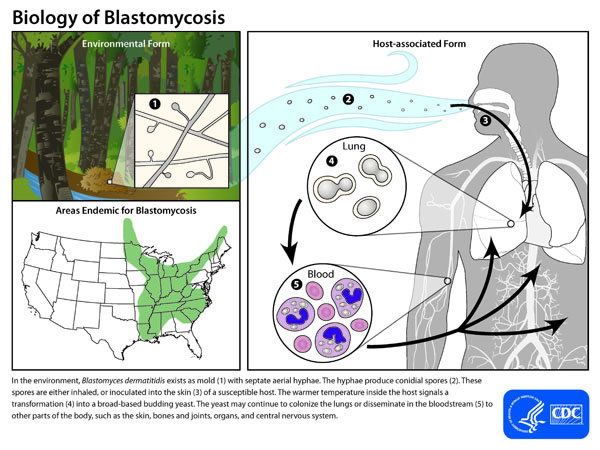Blastomycosis pathophysiology
|
Blastomycosis Microchapters |
|
Diagnosis |
|---|
|
Treatment |
|
Case Studies |
|
Blastomycosis pathophysiology On the Web |
|
American Roentgen Ray Society Images of Blastomycosis pathophysiology |
|
Risk calculators and risk factors for Blastomycosis pathophysiology |
Editor-In-Chief: C. Michael Gibson, M.S., M.D. [1]; Associate Editor(s)-in-Chief: ; Vidit Bhargava, M.B.B.S [2]
Overview
Blastomycosis is a dimorphic fungi. Infection occurs by inhalation of the fungus from its natural soil habitat. Once inhaled in the lungs, the conidia are mostly destroyed due to their susceptibility to neutrophils, leukocytes and macrophages. This explains the large number of asymptomatic infections from blastomycosis. Sometimes, a few conidia escape this protective mechanism and evolve into their yeast form, which being double walled structures are more resistant to destruction. This conversion releases a glycoprotien BAD-1, which induces humoral and cellular immunity. This eventually manifests as a pyogranulomatous response which contains the infection at the site of entry. However, sometimes they multiply and get disseminate through the blood and lymphatics to other organs, including the skin, bone, genitourinary tract, and brain. The incubation period is about 30 to 100 days.
